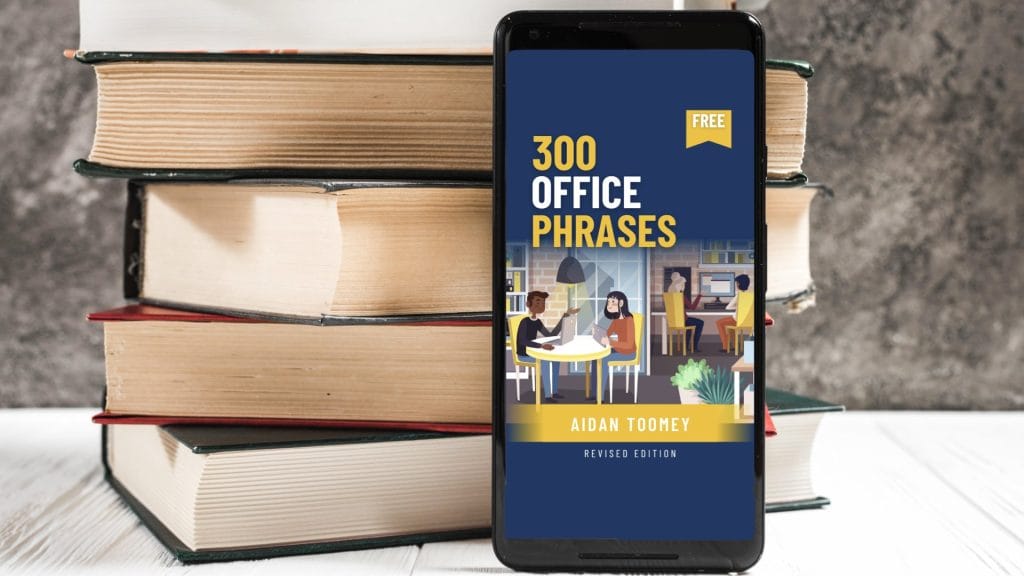
Are your workplace habits helping you stand out or holding you back? Mastering workplace etiquette is essential for building strong professional relationships, improving communication, and advancing your career. Whether you’re navigating office dynamics or communicating in a global business environment, understanding the unspoken rules of workplace behaviour can make all the difference.
This is the first article in a three-part series on how to improve your workplace etiquette and boost your professional communication skills. In this part, we’ll explore the foundational behaviours that every professional needs to succeed in today’s workplace.
Ready to enhance your business English and workplace etiquette? Let’s get started!
Let’s start off by defining workplace etiquette. It refers to the professional standards for polite behavior in a work environment, encompassing communication, conduct, appearance, responsibilities, and respect that are all expected in the workplace.
Watch the video, read the content, and complete the ACTIVITY towards the end of the lesson.
Don’t forget to like and follow us on YouTube and LinkedIn.
Scroll down to the end of the lesson to get your Ultimate 300 Business English Phrases for Communication in the Office ebook.
1) Etiquette in terms of GREETINGS
The way you greet colleagues greatly impacts first impressions and sets the tone for your ongoing relationships.
Saying ‘good morning’ or ‘hello’ with a smile demonstrates politeness and care while reinforcing bonds between co-workers. Using their names makes it warmer and more personal.
Example phrases:-
“Hi Lisa, good to see you again.”
“Good morning Jane, happy Wednesday, have a wonderful day.”
“Hi Kim, nice to see you.”
So here we’ve seen a few simple greetings, but greetings alone can feel abrupt. It can be good workplace etiquette to follow these greetings with small talk.
2) Etiquette in terms of SMALL TALK
Small talk is when you chat or speak informally with colleagues about everyday topics.
It usually lasts about 1 to 2 minutes and shows you are interested in your co-workers, helping create good relationships at work over time.
Example phrases:-
SMALL TALK when passing desks.
‘”Hi Lisa, how’s your day going so far? Making any fun plans this weekend?”
SMALL TALK when in the office kitchen.
“Morning Liz! That coffee smells amazing. Is it from the new breakthrough machine?”
SMALL TALK when walking through the common area.
“What’s new, Carlos? Have you been making headway on the ad campaign creative?”‘
‘”Morning, Carlos. Have those TPS reports come yet?”‘
SMALL TALK when at the water cooler area.
“I’m so glad it’s Friday, Gwen. Any fun plans this weekend?”‘
SMALL TALK when at the printer area.
“Hello, Alice. It’s almost Friday. By the way, it seems like the printer is jammed again.”‘
3) Etiquette in terms of END-OF-DAY DEPARTURE
Thoughtfully wrapping up tasks, acknowledging colleagues, and following security protocols demonstrate workplace etiquette while enabling teams to coordinate effectively for the next day’s goal.
Example phrases:-
Notifying colleagues of END-OF DAY DEPARTURE.
“Hi team, wrapping up then I’m off for the evening.”
“Heads up that I’m heading out once this backup finishes.”
END-OF-DAY DEPARTURE when bidding farewell.
‘”Have a wonderful evening, Jane. See you tomorrow.”
“Bye, Jane. Take care. Let me know if you need anything.”
“Bye, Jane. Take care. Let me know if you need anything on the Baxter brief before Monday.”
“Have a great night all, get home safely!”‘
4) Etiquette in terms of INTRODUCTIONS
The way you introduce yourself greatly impacts first impressions and sets the tone for your ongoing relationships.
Introducing yourself properly when meeting new clients, senior leadership, or external partners lays the groundwork for an impactful relationship.
Say your name, position, and relevant expertise concisely yet confidently.
Example phrases:-
INTRODUCTIONS when initially meeting new clients.
‘”It’s a pleasure meeting you, Mr. Lee. I’m Ted, and I lead marketing for Baxter Tech. I oversee our branding and go-to-market campaigns.”
INTRODUCTIONS when introducing colleagues
‘”Maria, this is our lead graphic designer. He’s responsible for creating all our creative assets.”
“Bill, I’d like you to meet Eva, our vice president of customer success. Eva, Bill handles PR.”
INTRODUCTIONS when at external networking events
‘”Hi there, I’m John Smith with Startup Analytics, focusing on data visualization tools.”
“Ben Sidwell, nice to meet you. I handle HR for Cortex Media, primarily talent acquisition and retention.”‘
INTRODUCTIONS when introducing your replacement
‘”Jill, I’d like you to meet Harry, who’ll be taking over the customer service manager role when I leave next month. Harry comes to us with over 5 years of support experience.”‘
INTRODUCTIONS when introducing your new manager to the team.
‘”I’m excited for all of you to meet Duncan, who is joining us as our new director of operations. He has a proven track record of strengthening workflows.”‘
INTRODUCTIONS when being introduced to leadership.
‘”Pleasure to meet you, Mr. Henderson. As Emma mentioned, I’m Daniel Lewis, and I lead the Southeast Sales teams who help drive our beverage distribution.”‘
Activity
Explore More Business English Resources
Looking for more Business English tips, courses, and free resources? Visit our LinkTree page to access everything in one place: https://linktr.ee/toomeybusinessenglish
Are You Ready to Excel at Workplace Etiquette?
Book a complimentary 15-minute consultation to discover how personalised coaching can help you master workplace etiquette, from effective communication and professional conduct to building stronger relationships in the office. Our tailored training has supported professionals from over 30 countries in enhancing their Business English and excelling in their careers.
Learn more at: https://toomeybusinessenglish.com/business-english-training/
FREE! THE ULTIMATE 300 BUSINESS ENGLISH PHRASES FOR COMMUNICATION IN THE OFFICE

